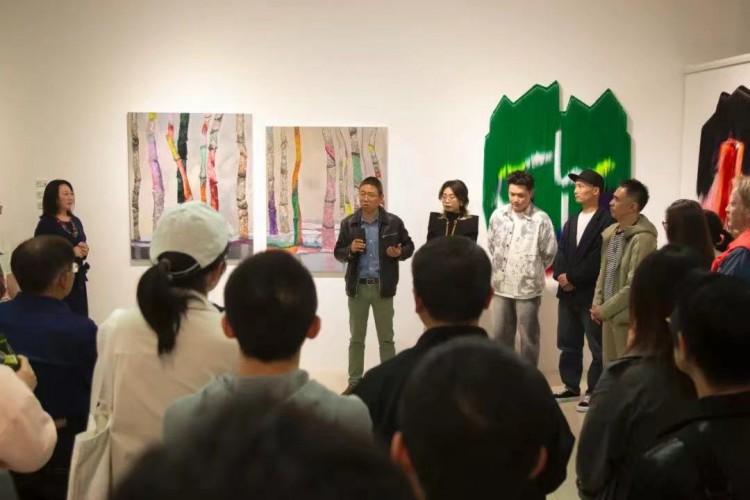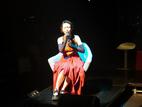On March 23, the “Transformation of Life” art exhibition commenced in Shanghai.
At the opening ceremony, Ms. Nancy Lee, the producer of this exhibition and the director of Nancy's Gallery, gave an opening remark, stating that this exhibition was more than just an art exhibition; it also depicted the transformation of artists' lives across periods. She expected the audience would find inner serenity, joy, and comfort in the show.
The term of this four-artist collective exhibition (Jia Jing, Liu Jin, Shi Gaoqing, and Wang Rui) spans from March 23 to May 5.
Subsequently, Dr. Zha Changping, the curator of the show, a well-known art critic and a biblical scholar currently serving as a professor at the Christian Research Center in the Institutes for Studies of Taoism & Religious Culture of Sichuan University in Chengdu City, expressed that, fundamentally, art embodied the transformation of individual human life. He commented that the works of the four artists in this exhibition, in one aspect, reflected the efforts of contemporary Chinese artists to pursue this transformation of life.
Professor Zha mentioned that an important characteristic of humans was constant self-renewal, and spiritual art could improve the openness of people’s consciousness. In other words, viewers could sense the renewal of the artist's self in their paintings, even if religious symbols and expressions weren’t used or emphasized directly. In his opinion, the works on display were witnesses to the artist's lives transforming into the ultimate reality. The significance of such a transformation was just like what was revealed in Jesus’s Transfiguration on the mountain.
He said, "Fundamentally, art embodied the transformation of individual human life. In contemporary art, this transformation takes the forms of defamiliarization and figurative language, which distinguishes art’s role in shaping people's cultural psychological structure compared with the function of philosophy in the symbolic language and the function of religions in the instructive language. All three are of irreplaceable value for individuals, urging them to transcend themselves and strive towards the ideal existence, the superego, ultimately leading to the ultimate reality. This journey facilitates the sublimation of individual humanity, enriching it to a fuller one."
Zha remarked, "What makes one great is not the topic nor the material of the painting, while the yearning for a great soul is the key. Such a great soul is what we desire deeply in our lives. My interest in art stems from its ability to reveal to me another state of existence in the dead of night. Just as I have observed the strength and fragility of life under the brushes of Shi Gaoqing, the chaos and order of life in Jia Jing’s and Liu Jin’s works, as well as the theme of death and resurrection in Wang Rui’s paintings."
"These themes are part of our daily encounters. Thus, we must not only focus on earthly matters but also on those of heaven, not only on the heavens above but also on the realms beyond the Milky Way, the divine realms. It is only in the divine realms that we can lift our heads from keeping our noses to the grindstone each day to gaze upon the stars and to peer behind the haze even further," he added.
The four artists from Sichuan Province aspire for their artworks to generate warmth and resonance in each viewer.
- Translated by Poppy Chan












